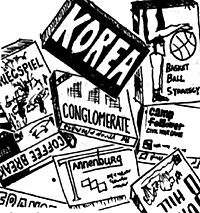 I received today the May issue of the Wargamer's
Newsletter. The difference between the English and American
approaches to wargaming are very visible; I will not
attempt to defend the merits of either against the other.
I received today the May issue of the Wargamer's
Newsletter. The difference between the English and American
approaches to wargaming are very visible; I will not
attempt to defend the merits of either against the other.
Christopher Scott's article on cavalry was interesting. Locally I see very little interest in man-to-man combat or imitation thereof. The rules are very interesting, although I fear a bit overwhelming for the would be attempted here at M.I.T. -- if it were tried at all, it would probably be tried with 200 figures to a side, and great confusion resulting. The "Counsels of War", "Firing into the Brown" and "You Write to Us" features have American equivalents, although the styles were a bit different.
"Thoughts on Modern Period Wargaming" were very familiar. Miniature wargaming locally started out with just such arrangements, but did not stay there. At the moment the realism fanatics are preparing for "minor improvements", at least if one cam call an expected 1/2 inch thickness of IBM360 output an improvement. It seems that the army has prepared estimates of accuracy at different ranges, utilising expressions like : p(hit) = e [to the power of](sa/r-squared).
They get worse from there. However, by a certain amount of sneakiness, one can total firepower points, artillery effects9 efforts to advance, etc., and tabulate them. I have been assured that when this is finished we will be able to fight battles by rolling a few dice/move, instead of several hundred (consecutive throws, not simultaneous)# and after pawing through the rules, the judge will announce results. It should be fun if.it works.
"Facts on Firing" are useful. The local prejudice would be to publish nothing until one has a complete set of estimates for a period, or class of weapons, and then publish an exhaustive article on the matter (Mahan's comments are really quite thorough, though).
Your "Battle Report of the Month" is unusually clear, in comparison with many I have read. The remarks on the intentions and actions of the players, as well as a fluid style, make for pleasant reading. Most American reports which I have read tend to be somewhat mechanical.
M.R. Bates remarks on mixed period wargaming suggest something I had not previously seen. Dave Millward's comments on plasticene terrain are a useful set of ideas which ought to be heard by more wargamers. This side of the Atlantic is essentially confined to real sand (which dries) and inflated versions of A.H.game boards, on which terrain consists of thin, rectangular wooden blocks or variations thereon. The MITSGS uses a casting clay-sand-oil mixture which does not dry, but which most people would probably find unacceptable -- it tends to stick to clothing, floors, skin, and so on in an unpleasant manner. The only thing immune to the stuff is our figure collection; Airfix and Minitank figures and vehicles, essentially all unpainted.
I fear that I must take issue with Gary Gygax's description of American wargaming. While I am not sure I agree with Russell Powell's ideas for turning wargaming from a hobby into a "professional sport", which is a bit of an exaggeration anyhow, it is only fair to point out that he has sunk several thousand dollars of his own mosey into the effort. If he can run good tournaments with cash or other prizes, all the better for the hobby. I would not begrudge him the possibility that he will got some return for his effort. Certainly there are very few people who will run a tournament because they enjoy the effort. (This I apply to American tournaments which are mostly run on a play-by-mail basis. The country is just too large for reasonable national conventions).
I do not agree with Gary's description of board games, particularly his characterisation of them as being in a "different class" than miniatures (particularly as the remainder of the paragraph suggests that this in a lower class). While it in true that many A.H. games are rather limited in scope -- Staliagrad has fewer than 100 pieces, and can easily be played on a card table, while U-Boat has 2 pieces, and can be held on one's lap -- this does not mean that they are necessarily simple minded. Having at one point written something like a 10,000 word article on Stalingrad (I await accusations of "Teutonic thoroughness" from some of your correspondents) I would suggest that the games are quite capable of development.
The suggestion that the games are limited to strategy or grand tactics (is some cases, small unit tactics) is not quite justified. I have participated is A.H. style games (notably Barbaressa, a semi-commercial game refighting the German invasion of Russia on a regiment and divisional scale) with 1,500 or more pieces on the board. With this number of pieces, there is a necessary separation between tactics and strategy.
Back to Table of Contents -- Wargamer's Newsletter # 102
To Wargamer's Newsletter List of Issues
To MagWeb Master Magazine List
© Copyright 1970 by Donald Featherstone.
This article appears in MagWeb.com (Magazine Web) on the Internet World Wide Web.
Other articles from military history and related magazines are available at http://www.magweb.com